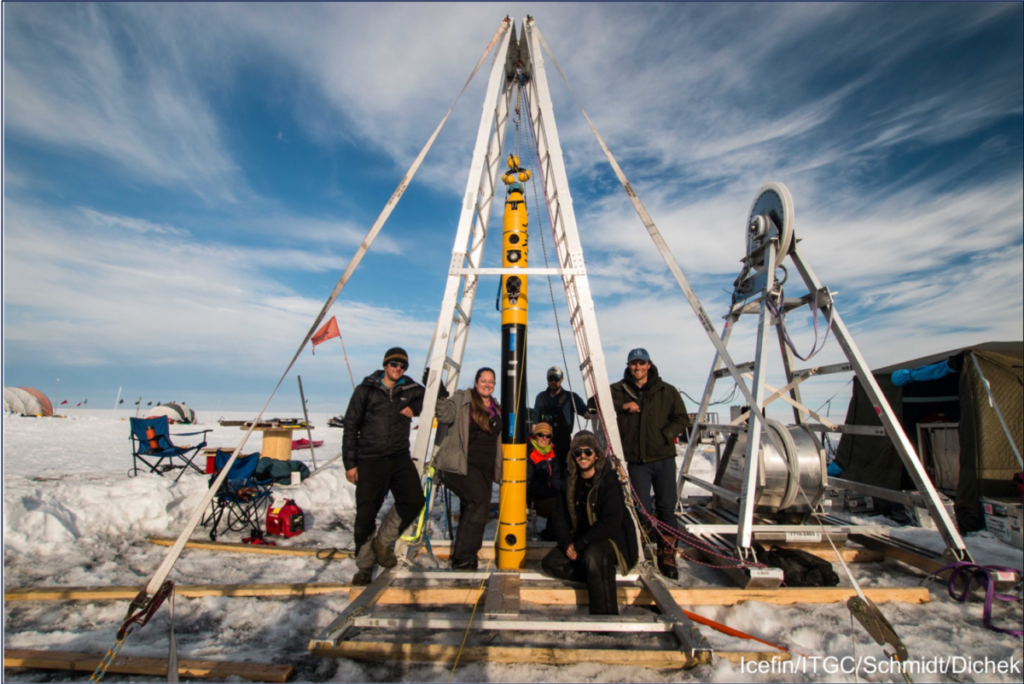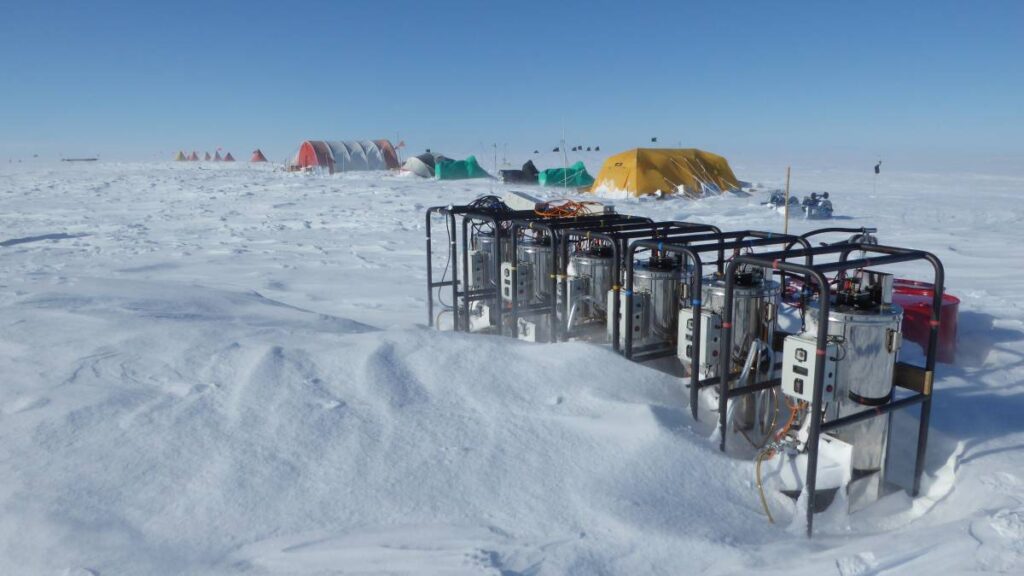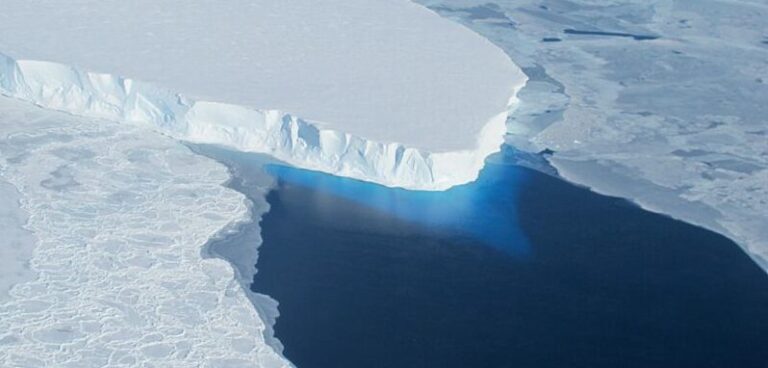The Thwaites Glacier in Antarctica is retreating rapidly as a warming ocean slowly erodes its ice from below, leading to faster flow, more fracturing and a threat of collapse, according to the International Thwaites Glacier Collaboration (ITGC).
ITGC is a team of nearly 100 scientists dedicated to studying the vulnerable glacier and funded by the US National Science Foundation and UK Natural Environment Research Council.
The five-year collaboration is aimed at collecting instrument data throughout the glacier and the adjacent ocean, and modeling ice flow and the future of the ice sheet. Work has revealed major changes in the ice, the surrounding water and the area where it floats off the bedrock below.
Thwaites sits in West Antarctica, flowing across a 120km stretch of frozen coastline. The studied glacier is the size of Florida or Great Britain and currently contributes 4% of annual global sea-level rise. If it does collapse, global sea levels are expected rise by several feet and put coastal cities in danger zones for extreme flooding.
One-third of the glacier, along its eastern side, flows more slowly than the rest as it’s braced by an ice shelf, a floating extension of the glacier that prevents faster flow of the upstream ice. However, the researchers expect the brace to melt within the next few years.
Hot water
Erin Pettit, an associate professor at Oregon State University, and her team have found that warmer ocean water circulating beneath the floating eastern side is attacking the glacier from all angles. This water is melting the ice directly from beneath, and as it does so, the glacier loses its grip on the underwater mountain. Huge fractures have formed and are growing as well, accelerating its demise.
The researchers have also found that the water is actually pumped under the ice sheet a short distance by tides. Lizzy Clyne, an adjunct professor at Lewis & Clark College in Oregon, and her team study the tidal pumping mechanism that forces warm water between the ice and bedrock at Thwaites. They have found that the floating portion of the glacier rises and falls with the tides – and that motion acts like a lever, pumping water under the ice sheet.
Also, downstream of the ‘grounding zone’, the area where the glacier lifts off the seabed, constant stretching and melting was seen to be rapidly creating long channels through the ice where water can flow, impacting the long-term stability of the ice shelf.
The grounding zone
According to Peter Davis, a physical oceanographer at the British Antarctic Survey, warm water is also a threat for this grounding zone. To collect their data, Davis and his team use hot water to drill access holes from the ice shelf surface to the ocean cavity below. They have found that the ocean waters in the grounding zone are warm, by polar standards, and salty, and generate prime conditions for melting the ice shelf from beneath.
Peter Washam, a research associate at New York’s Cornell University, also studies the grounding zone. His team lowered a remote-controlled underwater robot through the borehole to take measurements of the ocean, ice and seabed in this region. They mapped these properties up to the point where the ice and seabed come in contact. Washam similarly found the grounding zone to be “chaotic”, with warm water, rugged ice and a steep, sloping bottom that enables the water to quickly melt the ice sheet from below.
Ice cliff failure
As Thwaites retreats upstream and into the ice sheet, the research teams are concerned it may form tall ice cliffs at the oceanfront, which may lead to ice cliff failure. This is a process by which ice can break off the ends of the glacier into the open ocean. The process can take on many forms, but all of them could lead to very rapid retreat of the massive glacier.
Anna Crawford, a postdoctoral researcher at the UK’s University of St Andrews, and her team use computer modeling to study ice cliff failure. The team found that the bedrock shape of West Antarctica makes the region vulnerable to rapid retreat via ice-cliff failure, as increasingly tall cliffs could be exposed as the ice retreats. This could lead to a chain-reaction of fracturing, resulting in collapse. A challenge for the team is assessing if, when, and how fast this might occur, but they do expect major ice loss within several decades to a few centuries.
Ted Scambos, a senior research scientist at the Cooperative Institute for Research in Environmental Sciences (CIRES) and the US lead coordinator for ITGC, said, “Thwaites is the widest glacier in the world. It’s doubled its outflow speed within the last 30 years and the glacier in its entirety holds enough water to raise sea level by over 2ft. It could lead to even more sea-level rise, up to 10ft, if it draws the surrounding glaciers with it. If Thwaites were to collapse, it would drag most of West Antarctica’s ice with it, so it’s critical to get a clearer picture of how the glacier will behave over the next 100 years. ITGC research, including future sea-level projections, will be vital for policymakers in their efforts to mitigate and adapt to the impacts of global sea level rise.”





